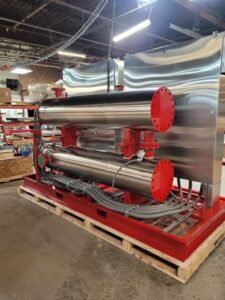What Makes Inline Heaters Stand Out?
Last updated on December 20th, 2023 at 03:54 pm
Inline heaters, also referred to as tankless or circulation heaters, are used to maximize efficiency of the heating liquids for a number of industrial purposes. Inline heaters are specially designed for heating processing liquids (normally hazardous) to enable the system run smoothly. They intermittently heat the medium in such a way that it remains in a good condition to flow easily. This feature is ideal for chemical companies as they have to heat huge quantity of liquids on a daily basis.
Things you should know
 Inline immersion heaters usually operate in a sealed system as they often work with dangerous and corrosive chemicals. The process starts with liquid going through an opening. It is heated there before being returned to the original chamber or pipe. This will allow even and quick heating, maintaining the liquid’s flow and viscosity. The heaters are available with RTV or thermocouple sensors that take care of the heating process by controlling the temperature.
Inline immersion heaters usually operate in a sealed system as they often work with dangerous and corrosive chemicals. The process starts with liquid going through an opening. It is heated there before being returned to the original chamber or pipe. This will allow even and quick heating, maintaining the liquid’s flow and viscosity. The heaters are available with RTV or thermocouple sensors that take care of the heating process by controlling the temperature.
Of course, every industry has its own unique requirements. As a result, there’s a wide range of immersion heaters available in the market so that companies can order the most suitable type.
What to look for?
While purchasing an inline heater, consider the following factors:
- Flow rate of the medium
- Maximum heating temperature with start-up cycle time
- Quantity of the medium
- Viscosity and corrosiveness of the medium
Why to use it?
Inline heaters are normally used in wet applications where the liquid to be heated has an improved flow (viscosity) compared to when heated with an immersion heater. Heat can also be used as a catalyst for chemical reactions that are required in chemical processing. Inline heaters are available in two forms. They can either be fixed or portable based on a companies needs.
Industries that work with: cleaning equipment, steam cleaners, hot tubs, showers and laboratories usually prefer inline heaters. They are particularly famous for processes such as: water heating, high-purity water heating, drying, annealing, curing, tempering and curing, vapor or gas heating and clean water heating.
